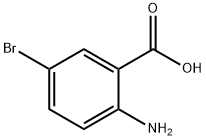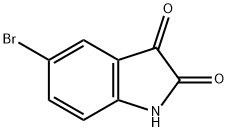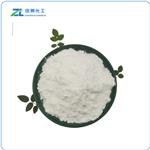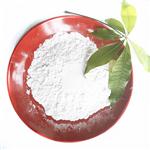Synthesis
A solution of bromine (7.2 g, 2 mL, 40 mmol) in 47 mL glacial acetic acid was added
dropwise to sodium 2-aminobenzoate (6.4 g, 40 mmol) in 32 mL of glacial acetic acid
at 15 °С and the mixture was stirred for 1 h at the same temperature. The product
was filtered off, washed with benzene and dried in the dark. The bromobenzoic acids
containing mixture (0.5 g) was added to 10 mL of boiling water followed by the
addition of 1.3 mL of concentrated hydrochloric acid and hot filtration under vacuum.
The insoluble material contained 2-amino-3,5-dibromobenzoic acid, whereas 2-
amino-5-bromobenzoic acid precipitated upon cooling of the filtrate. IR (suspension in nujol, cm−1 ): 3497, 3383, 1675, 1616, 1587, 1548, 1423, 1377, 1316, 1292, 1239, 1160, 1127, 812, 748, 691.
Chemical Properties
slight yellow to white powder
Physical properties
2-Amino-5-bromobenzoic acid has 17 atoms, meaning 45 vibrational modes in three main parts: Carboxyl group, amine group, and benzene. The molecule's most mechanically active parts are the carboxyl and amine groups. They exhibit rocking, swinging, and every kind of mechanical motion beside H immigrations between each other. For this reason, the molecule is not a simple carboxylic acid nor a primary amine[1].
Uses
It is used in the preparation of hepatitis C virus NS5b RNA polymerase inhibitors. Also used in the determination of cobalt, copper, nickel, and zinc.
Uses
2-Amino-5-bromobenzoic acid is a brominated derivative of Antharilinic Acid (A679222). 2-Amino-5-bromobenzoic acid displays plant growth-regulator activity. 2-Amino-5-bromobenzoic acid is used in the preparation of hepatitis C virus NS5b RNA polymerase inhibitors.
Preparation
2-Amino-5-bromobenzoic acid is synthesized from o-aminobenzoic acid by bromination.
Synthesis of 2-amino-5-bromobenzoic acid (4c, CAS: 5794-88-7) and 2-amino3,5-dibromobenzoic acid (4d, CAS: 609-85-8): A solution of bromine (7.2 g, 2 mL, 40 mmol) in 47 mL glacial acetic acid was added dropwise to sodium 2-aminobenzoate (6.4 g, 40 mmol) in 32 mL of glacial acetic acid at 15 °С and the mixture was stirred for 1 h at the same temperature. The product was filtered off, washed with benzene and dried in the dark. The bromobenzoic acids containing mixture (0.5 g) was added to 10 mL of boiling water followed by the addition of 1.3 mL of concentrated hydrochloric acid and hot filtration under vacuum. The insoluble material contained 2-amino-3,5-dibromobenzoic acid, whereas 2- amino-5-bromobenzoic acid precipitated upon cooling of the filtrate.
2-Amino-5-bromobenzoic acid (4c) IR (suspension in nujol, cm?1 ): 3497, 3383, 1675, 1616, 1587, 1548, 1423, 1377, 1316, 1292, 1239, 1160, 1127, 812, 748, 691.
reaction suitability
reaction type: solution phase peptide synthesis
References
[1] Kunduracioglu, Ahmet . "Tautomeric Forms of 2–Amino–5–Bromobenzoic Acid: A DFT Study for Structural and Molecular Orbital Analysis." (2021).





